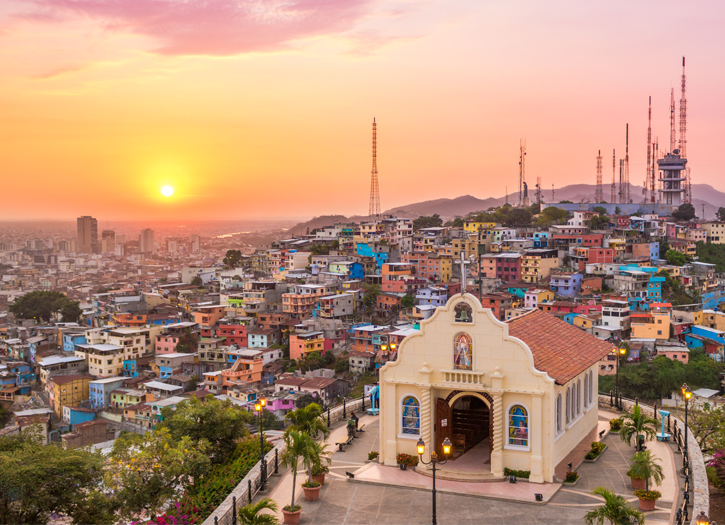The virus was reported to have spread to Ecuador on 29 February 2020 when a woman in her 70s tested positive for the virus. Ecuador was described in April as emerging as a possible “epicentre” of the pandemic in Latin America, with the city of Guayaquil overwhelmed to the point where bodies were being left in the street. However, the country now ranks just seventh in the number of confirmed cases in South America, having been eclipsed by Brazil, Peru, Mexico, Colombia, Chile, Argentina, and Bolivia.
As of April 2020, Ecuador has been distributing cardboard coffins due to the country’s struggle in evacuating the dead bodies. The government built emergency cemeteries to dispose of the bodies which are left in the streets. The pandemic which led to a fall in oil prices had severe economic repercussions for the country.The number of deaths is believed to be significantly higher than the official figure due to a low rate of testing, with many thousands of excess deaths reported compared to the equivalent figure for a normal period. A The New York Times analysis found 7,600 excess deaths had occurred from 1 March to 15 April as the mortality rate spiked to three times as much as usual.
As of 13 March, 23 cases had been confirmed by the Government. There were cases reported in Pichincha (5), Guayas (8), and Los Rios(10). The Government suspended class attendance for students at all levels. Additionally, the first death (the first Ecuadorian infection case) was reported by the Minister of Public Health, Catalina Andramuño, during a press conference in Guayaquil.On 14 March, Ecuador’s government announced the closure of its borders from 15 March to all foreign travelers due to the spread of the coronavirus, after local authorities confirmed a second death from the infection. Vice President Otto Sonnenholzner, in a televised statement, said all aerial, land and maritime transport into the Andean country will be prohibited. Ecuador at this point had confirmed 28 cases of the coronavirus, including two deaths, and authorities banned all public activities.
On 21 March, the government confirmed 532 positive cases, 870 suspected cases, 7 deaths and 3 recovered. On that day the Ecuador’s Minister of Public Health Catalina Andramuño resigned; in her letter of resignation she said that the government had not allocated any additional budget to her ministry for the COVID-19 emergency. On 23 March, the Ecuadorian government reported 981 confirmed cases and 18 deaths. On 24 March, the Ecuadorian police moved to dismantle open markets to limit large groups of people coming together.On the afternoon of 30 March, the new Minister of Public Health of Ecuador, Juan Carlos Zevallos announced that 54 people had recovered.
Data emerged on 17 April suggesting that the number of death due to COVID-19 may be much higher than that officially reported – 10,939 people had died in six weeks since the start of March in the Guayas province, compared to a normal figure of 3,000 for the region, with nearly 6,000 more deaths than average reported in Guayaquil in the first two weeks of April alone. On 23 April, Health Minister Juan Carlos Zevallos doubled the number of confirmed cases, adding 11,000 new infections to the previous total of 11,183 infections. The doubling of cases was the result of delayed testing of patients.It has been estimated that there were over 9,000 excess deaths in Guyaquil in the months of March and April.
The government is paying informal workers $60 per month to stay at home. An estimated 500,000 Venezuelan migrants in Ecuador are especially vulnerable because they do not have access to the stimulus payments. The country was already in economic difficulties before the pandemic, but the coronavirus outbreak and fall in oil prices during the pandemic had led to severe economic problems in the country. All government officials and teachers had been asked to take a pay cut, a number of national companies such as the national airline TAME were liquidated, and Ecuador was unable to pay its foreign debt. The budget deficit for 2020 is expected to be at least $12bn, which is about 11 per cent of Ecuador’s gross domestic product.







Add Comment
You must be logged in to post a comment.